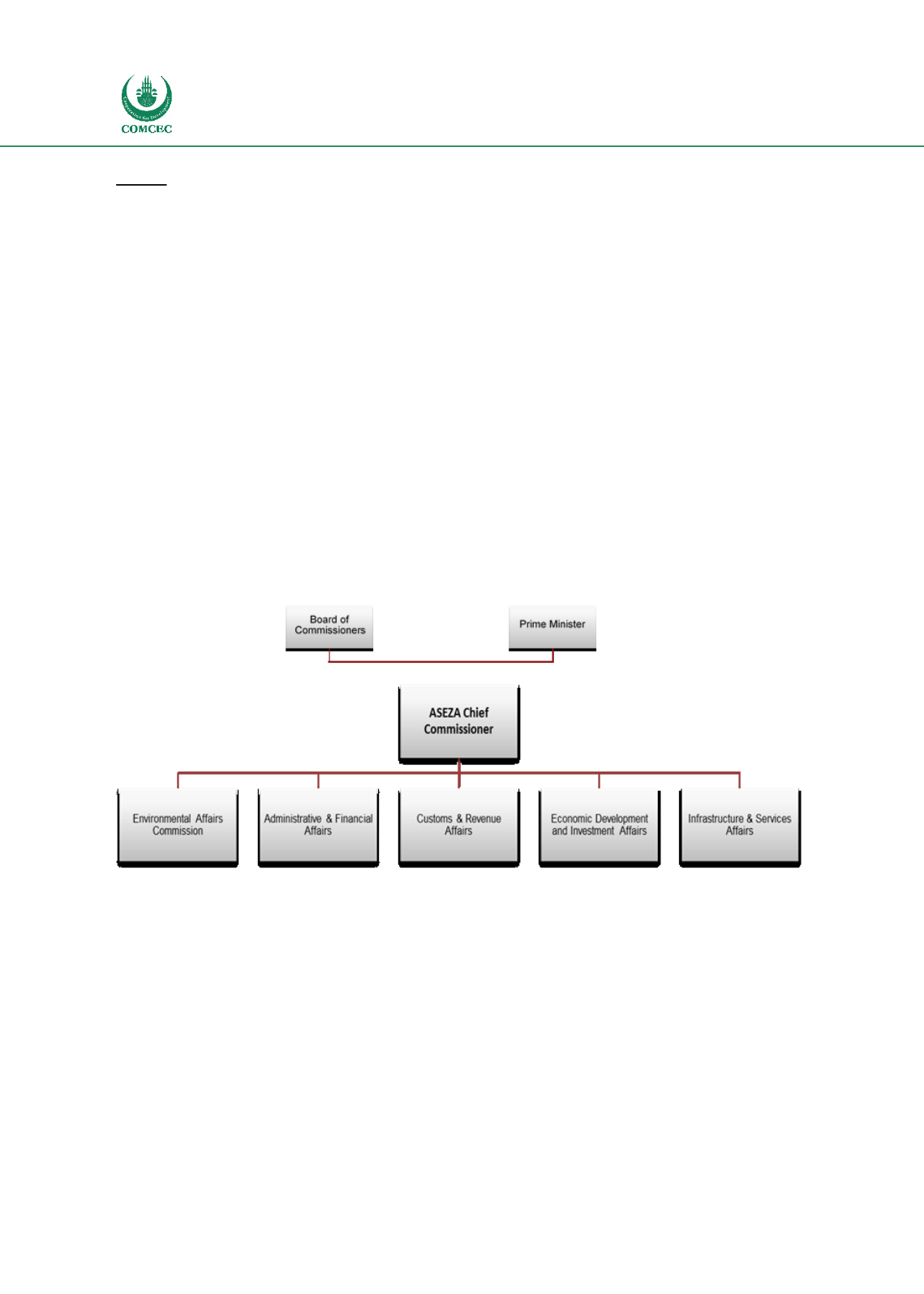

Special Economic Zones in the OIC Region:
Learning from Experience
132
ASEZA
Upon its creation and according to the ASEZ Law, the ASEZA subsumed the functions and
employees of both the Aqaba Regional Authority (ARA) and the Aqaba Municipality. The ASEZA
tasks include developing the area for investments, increasing job opportunities and preventing
monopoly of economic activities. The ASEZA’s vision for Aqaba is to:
1.
Create a world-class business hub and leisure destination, enhancing the quality of life
and prosperity of the regional community through sustainable development; and
2.
To transform the city of Aqaba and its surroundings into a driving force for the economic
growth of Jordan and the Middle East.
ASEZA has adopted a service-oriented model with an aim to assist investors with setting up of
their businesses in the zone through a one-stop-shop. Although, ASEZA started out with a
separate customs commission, the customs function has now been taken over by the Jordanian
National Customs.
The ASEZA includes five main branches as shown i
n Figure 31.Figure 31 - Aqaba SEZ Organisational Profile
Source: BuroHappold Research (2017)
Land ownership and lease terms are decided by ASEZA with the occupier based on the
requirement of the facility needed to be set up. ASEZA also facilitates provision of basic
infrastructure such as utilities, ICT etc. The development of ASEZA is governed by the 2001-
2020 masterplan which outlines the aim and vision to integrate the free zone into the wider area
masterplan. Part of the plan is also to focus on attracting private payers in infrastructure
development.
The operational aspects of ASEZA also offer further insight into the factors driving its success.
The zone operates a one stop shop to help businesses register their interest in operating in the
zone.
















